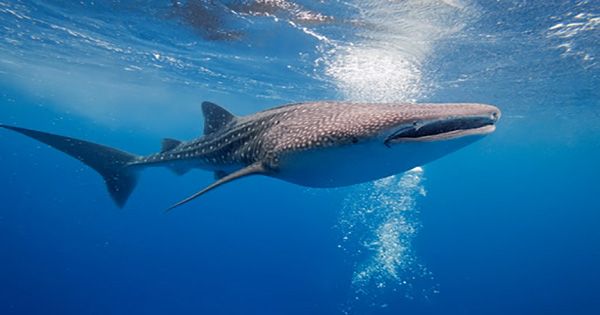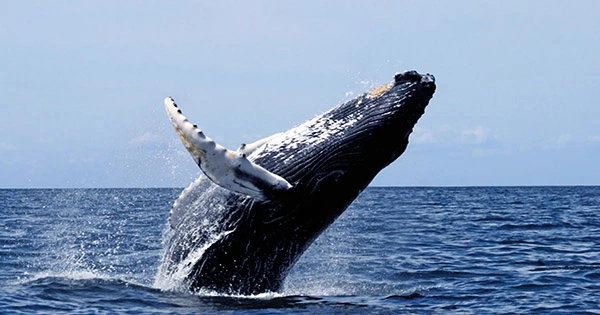Humpback whales have a revolutionary new cry that scientists have found. The study team has termed this hitherto unheard and unrecorded “impulsive sound” the “gunshot.” The new cry was recorded in November 2019 during the summer in the South Atlantic Ocean in an area known as the Vema Seamount, according to the journal JASA Express Letters. Approximately the course of 11 days, the moored hydrophones (underwater microphones) captured over 600 cries that were not whale songs.
The majority of the calls were “whups,” which are low-frequency, frequency-modulated sounds. They did, however, occasionally pick up these hitherto unknown “gunshots.” Both sorts of calls were predominantly captured at night, and throughout a three-day period in particular.
“We still don’t completely understand what the ‘gunshot call’ means, and it’s amazing to capture it in humpback whales for the first time,” said Dr. Kirsten Thompson of the University of Exeter and Greenpeace International Research Laboratories, one of the scientists who conducted the experiment. The “whup” has been connected to a means for mother-calf pairings to stay in close touch, according to researchers. They are able to find each other because to the sound. When humpback whales eat, they make a “whup” sound.

“Our research shows that whales travelling through Vema on their lengthy trip across the oceans are feeding,” Dr Thompson said. “Seamounts may provide rich habitat for a wide range of migratory species, and we urgently need worldwide ocean protection to ensure that these ecosystems can continue to exist.” Such studies demonstrate that the high seas (Vema is 1,000 kilometers from South Africa) are teeming with life and should be protected. When it was found in 1959, this site was immediately overfished. Although the area is now largely restricted to fishing, no globally binding treaties exist to safeguard these maritime areas.
“Fifty years ago, countries banded together to save humpback whales, and watching many populations thriving now provides us a glimpse of their existence on the high seas.” Only 3% of the world’s seas are adequately protected, which isn’t nearly enough to conserve the environments that whales rely on, according to Dr. Thompson. Greenpeace International organized the research as part of a scientific mission led by the Universities of Stellenbosch (South Africa) and Exeter (England) (UK). The worldwide population of humpback whales was approximately 5,000 in the 1960s, but it has now grown to around 135,000 individuals.














